 Environmental organization members hold umbrellas to demonstrate the dangers of nuclear energy that say, “Nuclear-free earth, nuclear-free future,” in Seoul’s Gwanghwamun, Mar. 17. (Photo by Lee Jong-keun)
Environmental organization members hold umbrellas to demonstrate the dangers of nuclear energy that say, “Nuclear-free earth, nuclear-free future,” in Seoul’s Gwanghwamun, Mar. 17. (Photo by Lee Jong-keun)Hankyoreh
Civic groups call for closure of aging nuclear plant
The Wolseong reactor received an extra 10-year operational extension prior to the nuclear crisis in Japan
March 18, 2011
By Park Ju-hee
As the crisis at Japan’s Fukushima Dai-ichi nuclear power plant races out of control following a series of explosions resulting from last week’s earthquake and tsunami, concerns are mounting rapidly among South Koreans living near power plants. Civic organizations in the area of Gyeongju, North Gyeongsang Province, demanded the permanent closure of the No. 1 reactor of the Wolseong Nuclear Power Plant in the city’s Yangnam Township. The extension of the reactor’s operating life is under examination.
Hoisting a banner reading “Wolsung = next Hukusima,” members of Gyeongju Nuclear Safety Solidarity held a press conference Thursday in front of Gyeongju City Hall, where they demanded that authorities “withdraw plans to extend the operational life of the decrepit first reactor at the Wolseong Nuclear Power Plant, and close it permanently.”
The group was organized by twenty local civic and social organizations including the Gyeongju Federation for Environmental Movement.
“The series of explosions at the Fukushima plant shows that the more time-worn a power plant is, the more it is susceptible to natural disasters such as earthquakes,” the group said. “As citizens of a city with numerous nuclear power plants, we cannot view the Japanese people’s tragedy as someone else’s affair.”
The No. 1 reactor at Wolseong, which began commercial operation in April 1983, is facing the end of its thirty-year design lifespan in March 2013. The Ministry of Education, Science and Technology (MEST) is scheduled to make a decision around June as to whether to prolong its lifespan by another ten years.
“The Eupcheon Fault near the Wolseong plant is an active fault, so there is a possibility that the land may be unstable as a result of the earthquake in Japan,” the group said.
The Wolseong Nuclear Facility Environment and Safety Monitoring Committee (WSNESC) produced an analysis of tritium concentrations in the bodies of residents in the area around the Wolseong plant. According to the group, the concentration of tritium in the bodies of residents of Naa Village in Gyeongju’s Yangnam Township, at an average of 23.6 becquerels per liter, is 25.7 times higher than the 0.919Bq/L concentration seen in residents of Gyeongju’s urban area.
Please direct questions or comments to [englishhani@hani.co.kr]
_____________________________________
See also
The Kyunghyang Shinmun
Are We Abandoning Energy Reductions and Just Building More Nuclear Plants?
March 17, 2011
The Kyunghyang Shinmun
Radiation Terror and the Lee Government's 'Safety Incantation'
March 18, 2011

![[URGENT PLEA: In Update] EMERGENCY in GANGJEONG Since AUG. 24, 2011](http://2.bp.blogspot.com/-3iz8k-USXVY/TlmRYhhIYtI/AAAAAAAAL2c/9dbF85ZIkIs/s227/jejusit.jpg)

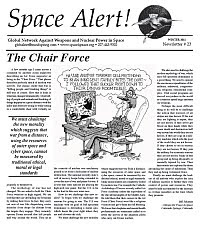

![[Solidarity from Japan for the Jeju] 253 individuals and 16 groups/organizations](http://2.bp.blogspot.com/_gnM5QlRx-4c/TR_YeNVE1yI/AAAAAAAAHWQ/ARyf6oQN0S0/S227/jeju_12_10j.jpg)
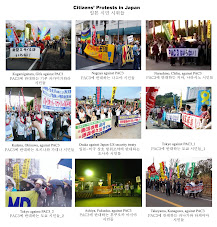
![[Translation] Korean organizations' statement: Immediately cancel the joint ROK-US drill Nov 26](http://2.bp.blogspot.com/_gnM5QlRx-4c/TPOE8VKXHFI/AAAAAAAAGlM/8lryt-8sFjc/S227/1.jpg)
![HOT! [Hankyoreh Hani TV] Beneath the Surface: the investigation into the sinking of the Cheonan](http://4.bp.blogspot.com/_gnM5QlRx-4c/TOI83qht8aI/AAAAAAAAGXU/22SW6Q5ntV8/S227/HaniTV%2BCheonan.gif)

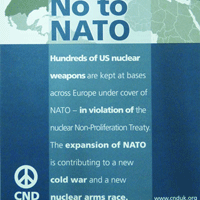

![[Translation]Statement against illegal inspection and unjust lay-off by the Kunsan USAFK!(Nov_2010)](http://4.bp.blogspot.com/_gnM5QlRx-4c/TOPLsVkZMqI/AAAAAAAAGZs/3YnnckIyAaY/S227/gunsan%2Bprotest.gif)
![[Translation] Korean organizations' statement against dispatching special force to the UAE on Nov.](http://4.bp.blogspot.com/_gnM5QlRx-4c/TOP95zHXlCI/AAAAAAAAGak/E0Ug1XtUFfM/S227/antiwarpeace.jpg)
![[Translation] Stop, Joining MD!: South Korean activists' statement and writing on Oct. 25, 2010](http://3.bp.blogspot.com/_gnM5QlRx-4c/TOP7Es4_2sI/AAAAAAAAGac/eWVMPD-U4p0/S227/StopMD.jpg)
![[In Update] People First, NO G-20 (Nov. 6 to 12, Korea)](http://2.bp.blogspot.com/_gnM5QlRx-4c/TJd53XBzHlI/AAAAAAAAFQo/ldO9JPE3eqo/S227/left21_G20.jpg)
![[International Petition] Stop US helipad plan in Okinawa to save great nature](http://4.bp.blogspot.com/_gnM5QlRx-4c/TKC2AHRNzBI/AAAAAAAAFUo/yGWXODTw_uM/S227/yanbaru_w.jpg)

![[Global Network] against the first launch of Quasi-Zenith Satellite, Japan, on Sept. 11, 2010](http://4.bp.blogspot.com/_gnM5QlRx-4c/TIowa1boy4I/AAAAAAAAFDI/82rAi98uq-c/S227/Qzss-45-0_09.jpg)

![[In update] Some collections on the Koreans’ protests against the sanction & war on Iran](http://4.bp.blogspot.com/_gnM5QlRx-4c/TJMvke6t8zI/AAAAAAAAFO4/tamQ8LUnOOA/S227/No+Sanction+on+Iran.jpg)
![[Three International Petitions] to End the Korean war and peace treaty(or peace resolution)](http://1.bp.blogspot.com/_gnM5QlRx-4c/THef7bzWxYI/AAAAAAAAE44/wwdzSDfYhdw/S227/border.jpg)
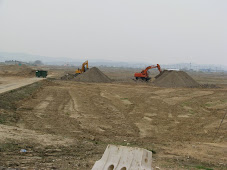


![[Collection of Documents] No Base Learning and Solidarity Program_Korea(June 14 to 20, 2010)](http://1.bp.blogspot.com/_gnM5QlRx-4c/TCTvVuN8NeI/AAAAAAAAEek/8vBJVaHdk10/S227/No-Base-banner.jpg)
![Site Fwd:[John Hines] A U.S. Debate coach’s research trip on the Issues of Korea](http://3.bp.blogspot.com/_gnM5QlRx-4c/TINCO36mzzI/AAAAAAAAE_w/Rds12NcBOXM/S227/Jeju-Peace-Tour.jpg)


![[News Update] Struggle Against the Jeju Naval Base since Jan. 18, 2010](http://1.bp.blogspot.com/_gnM5QlRx-4c/S1vvWaP25uI/AAAAAAAACkg/QvpW1tgOlKM/S226/scrum1.jpg)


![[Urgent] Please spread the Letter!: There was no Explosion! There was no Torpedo! (May 26, 2010)](http://4.bp.blogspot.com/_gnM5QlRx-4c/S_9JmsKEU7I/AAAAAAAAEP8/sAWjSPqxzUI/S227/grounded.jpg)
![Text Fwd: [Stephen Gowans]The sinking of the Cheonan: Another Gulf of Tonkin incident](http://1.bp.blogspot.com/_gnM5QlRx-4c/TAL_FtYKQ-I/AAAAAAAAERE/NEEMijiEcRM/S227/lee-myung-bak.jpg)
![[Japan Focus]Politics in Command: The "International" Investigation into the Sinking of the Cheonan](http://1.bp.blogspot.com/_gnM5QlRx-4c/TBMJ2syJzyI/AAAAAAAAEZU/uTYZccU5vyk/S227/wen_jiabao_and_lee_myungbak.png)
![[Japan Focus] Who Sank the SK Warship Cheonan? A New Stage in the US-Korean War and US-China](http://2.bp.blogspot.com/_gnM5QlRx-4c/S_iQ2vE5ZpI/AAAAAAAAEOU/Oo1SPcAe8FE/S227/buoy_map.gif)
![[Updated on 12/13/10] [Translation Project] Overseas Proofs on the Damages by the Military Bases](http://4.bp.blogspot.com/_gnM5QlRx-4c/S-qSj59gPLI/AAAAAAAAEGM/mwjlFtPE-jo/S227/missile.jpg)
![[International Petition] Close the Bases in Okinawa](http://3.bp.blogspot.com/_gnM5QlRx-4c/S8-z3DYNwNI/AAAAAAAADo4/OswTSchK09M/S227/2.jpg)

![[In Update]Blog Collection: No Korean Troops in Afghanistan](http://4.bp.blogspot.com/_gnM5QlRx-4c/SwnlLD9IewI/AAAAAAAAB9E/oUPssnpNidA/S226/No-Troops-to--Afghanistan.jpg)
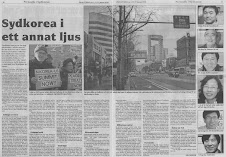

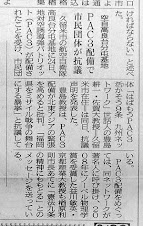

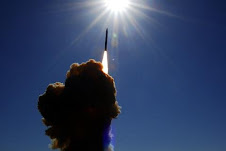






No comments:
Post a Comment